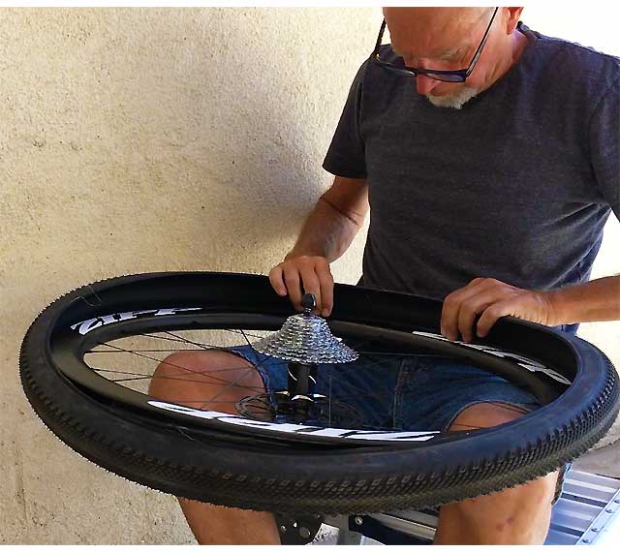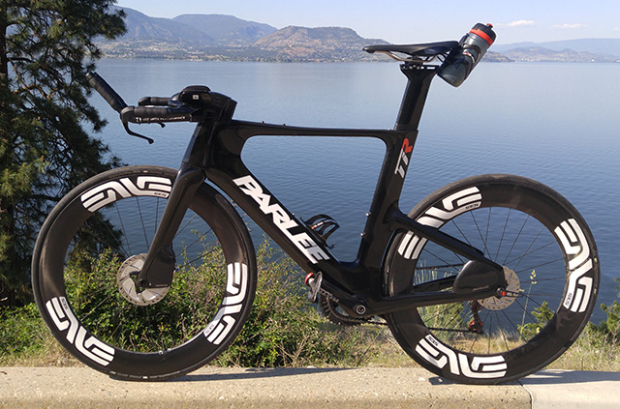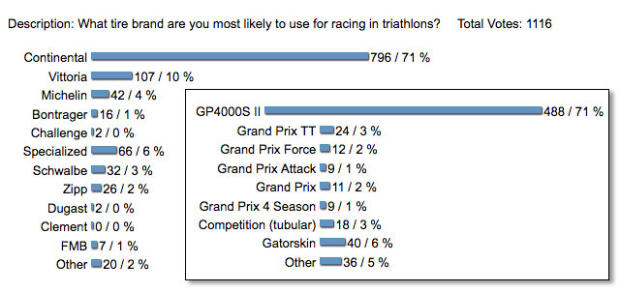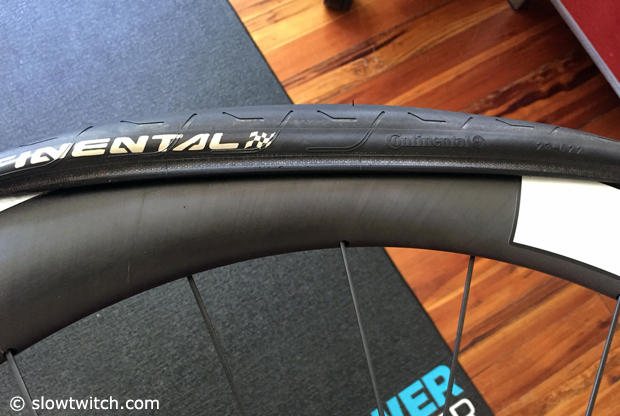Zipp and the Future of Road Tubeless
Here’s an example of a wheel that illustrates where I think the market is going.
Is it where the market ought to go? That’s a separate question. As with disc brakes, there’s the way things oughta be (and I’m not taking a position on this), and there’s the way things are. In my opinion, tubeless is the way things are. Or, soon will be.
I made a short video below to demo why I think road tubeless is the way forward. In my opinion, early road tubeless tire makers engineered out of an abundance of caution, perhaps because of the high pressures in road. I think they made their tires on the tight side of right. And rim makers did the same. Tires a tad small, rims a tad large.

This gave road tubeless a bad rap, because you couldn’t put the tires on; you couldn’t get them off. Watch this video and tell me what you think.
We’re into our third generation (is that fair?) of road tubeless. First were the original Hutchinsons. Second were the Vittorias and Schwalbes that roll really fast, but are not known for their ease in mounting (Schwalbe not that bad).
A Tire’s a Tire
And now we have Zipp wheels and tires where, in the words of Nate Newton, SRAM's Road Marketing Technical Rep, ease of use, was “really key design driver for us; rim diameters designed to be not difficult.” Zipp's tubeless Tangent Speed on a Zipp 303 is as easy to mount as any tubed tire on any rim.
We’re entering a new generation (for tires and wheels) where the ease of mounting for tubeless is indistinguishable from their tubed predecessors. And that leads me another point…
A Wheel’s a Wheel
I just finished around of wheel testing on a Diamondback Andean tri bike. I also have a Litespeed gravel bike. This Zipp 303 could easily be used for either. It’s a 700c, disc brake wheel, lightweight, aerodynamic, strong, it’s just a wheel. And this is where I think wheel manufacture is going. It’s not an aero wheel, or a road or a gravel wheel. It’s just a wheel.
This Zipp 303 was optimized for a 28mm tire. It’s an all-around wheel. Cross, gravel, classics, road. But you’ll still see a lot of 303s in Kona. Why? Because I have 2 front wheels: my go-for-it wheel, that is between 70mm and 90mm deep, and my it’s-too-windy! wheel, and if this is a wheel for when it's scary out, then you buy a 404 or maybe you buy this wheel. (I think desired tire width maybe the determinant.)
The thing is, wheel makers have few reasons nowadays to make a wheel that won’t hold up in any conditions. If they’re all disc brake wheels, and if they’re 700c, then really what distinguishes a gravel wheel from a triathlon wheel? Seems to me it’s how deep the section, and how wide the bead width. But, as to bead width, why do we need more than 2 widths? If we use a 19mm bead width for a 25mm tire; and 21mm for everything between 28mm road and 42mm gravel, we've licked it, no?
I still have my issues with tubeless. One is valve compatibility. Another is the sometimes-difficulty in airing up a tire. And, not all tubeless tires roll fast. This Zipp Tangent Speed in 28mm is a very fast tire, right there with the Conti 4000S II if you ride that tire with a butyl tube. But, that’s at high pressure. Drop the pressure a bit and the Conti squirts ahead.
Still, for road riding, if you gave me the choice between this Zipp 303 with the Tangent Speed in 28mm, with sealant, doesn’t bleed air day-to-day, don’t have to buy that latex tube; flats fix themselves, Dynaplug seals the bigger holes; versus Conti/latext; that’s a tough choice for me today. And if it’s tough today, what’s that choice going to look like 3, or 5, years from now?





Start the discussion at slowtwitch.northend.network